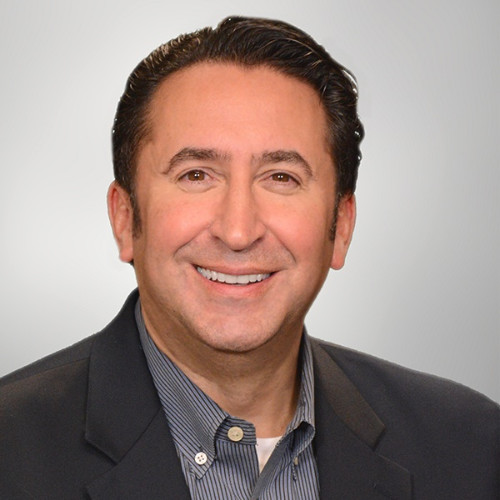A look at the top three client expectations
By John Chase
As we settle into a new year in the benefits delivery industry, those engaged with clients are taking a short breather to wrap up ACA reporting season by the end of February! Upon reflection, we have collectively conquered another wildly hectic Q4 enrollment season, when most U.S. companies complete re-enrollment, implement and communicate associated changes, and roll out improvements for working better with employees during the upcoming year.
With 2018 over, we must reflect upon what worked and what did not and apply those lessons to the new year. For those in the benefits delivery space, which includes benefits enrollment technology, strategic communications and administrative support, now is the time to set goals for the new year. This begins with asking the question: What do our clients need from us to be successful in 2019?
Top Three Client Expectations
- INNOVATION – We will be expected to innovate the mobile technology/smartphone benefits engagement experience, and take it up several notches this year.
Mobile communication strategy will continue to be the top technical priority, as our end users are becoming increasingly more astute. Have you noticed most non-social media apps we use in our daily lives such as banking, insurance, Amazon, EBay, Mint, apps for news, travel, restaurant reservations, even the incredible choices for pinpoint weather –are always improving? Gone are the days when a great mobile experience was defined simply by posting documents and pages in a mobile-friendly format, or disguising a read-only experience on a website as an “application.”
Users want bi-directional communication, notification options, one-click navigation, meaningful dashboards with real time connections to other services, and stellar performance. Employers who engage these applications for benefits demand to see ROI on these tech investments, including analytics about end-user adoption/attention to their content, and targeted push notifications to reach those who aren’t available through email, or overloaded by it. Point made: Mobile tech must constantly enhance the employee experience.
- EXECUTION: We will be expected to help our clients execute a more effective benefits administration “machine.”
In our clients’ back office of benefits administration, there is some not-so-glamorous support work to be done, when compared to nifty apps and sparkling communication strategies! For example, support needs to be given to enrollment transactions, effective data exchanges, carrier billing and invoicing, EOI management, dependent verification, QLE efficiency, new hire and status change onboarding, as well as ACA compliance rigor and communication.
Additional support is required to effectively man the phone lines and email boxes so employees have a great experience when they approach the service counter. Such processes are all parts of the “gears” of the benefits administration machine. Clients are looking for ways to get employees out of the engine room and onto the bridge, to free them from tactics so they can focus on the strategic work. If we’re in this space, clients expect us to continuously improve the back office and execute it flawlessly. Innovation matters, but execution matters more.
- OPTIMIZATION: We will be expected to help our clients optimize and appreciate the time that employees give to their employee benefits plans.
Our end customers are the employees out there who purchase and rely on their employer-sponsored benefits. Messaging overload increases each year, while our attention spans and bandwidth for messages decreases. Run a stopwatch on how long each message/interaction takes to consume. Be mindful and strategic about how and how often we communicate, carefully choosing every written and spoken word in conversation, emails, text messages and phone calls.
No matter where our clients sit on their benefits engagement strategy, we are challenged to help move them forward based on where they start. Some clients begin with understanding basic rules of healthcare, while others are further down the road where benefits awareness is already high, but are now seeking to change behavior with “wellbeing” initiatives. Within this limited bandwidth, we must cherish the precious moment of employee attention that we earn and make our limited time with them count.
The good news is clients entrust us to deliver exceptional benefits administration that drives employee engagement and retention. Every year we must continue to earn this trust by delivering on the promise and exceeding their expectations.
To recap, I predict this year clients will expect their benefits delivery provider to: 1) innovate the technology 2) execute the basics and 3) optimize the processes, while engaging employees efficiently and effectively. This is a short list of high expectations, and by no means simple or easy to achieve. It is an exciting time to be in the benefits industry and the rewards are high for those who seek to put their clients’ success first. Those who do this are well positioned to achieve these goals and build lifelong, mutually beneficial relationships in 2019 and beyond.

John Chase joined Hodges-Mace in 2005 and currently serves as executive sponsor to sales and operations, and is responsible for implementation and support to the company’s largest clients.
John was the first Hodges-Mace employee, and has held leadership roles in operations, client management, and technology including serving as chief information officer until 2014. John has an extensive background in benefits administration and technology, enrollment operations and group benefits. He interacts regularly with employers and consulting clients, including contacts in human resources, benefits, and I.T, and he is known for being an energetic and conscientious partner with the ability to engage at a deep level of detail to achieve broader strategic goals.
Prior to joining Hodges-Mace, John worked for 13 years in the employee benefits industry with insurance carriers CNA and Liberty Mutual in Chicago, Philadelphia, and Atlanta, where his roles included underwriting, business technology consulting, and sales. John earned his Bachelor of Arts in Communication from Augustana College and his Master of Science degree in Communication Research from Illinois State University.
